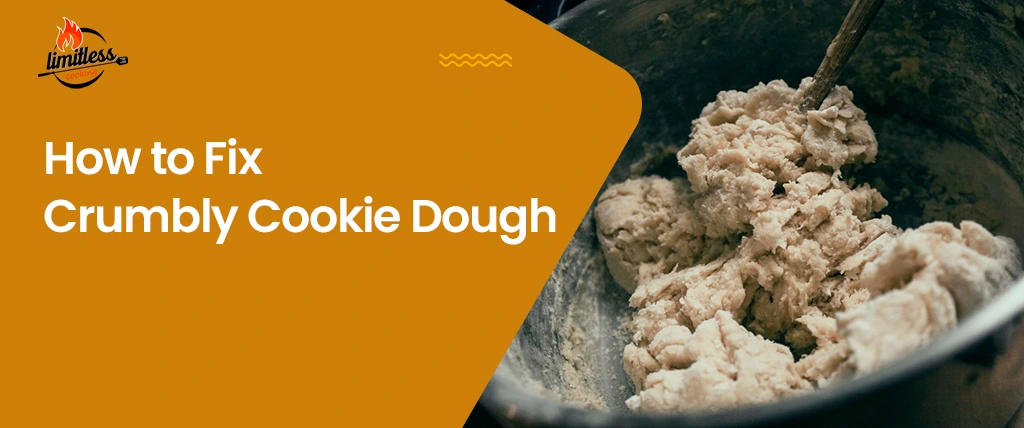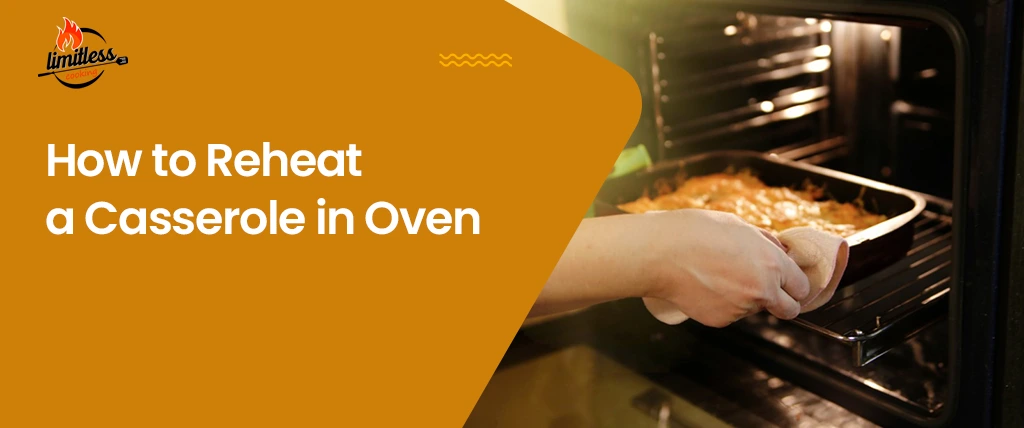How to Fix Crumbly Cookie Dough? Why Is My Cookie Dough Crumbly?

Are you baking some cookies to make your holiday smell like fresh-baked magic, and everything was going perfect until you found out that your cookie dough is dry, crumbly, and tough?
Yes, dry and crumbly cookie dough is always a dilemma because baking that dough will result in tough, dry cookies. So how to fix crumbly cookie dough?
Don’t worry about your efforts going in vain. Luckily, you can fix dry cookie dough and save your cookies.
To fix cookie dough that is too dry or crumbly, you may need to add more fat, water, or milk. . However, the best way to fix this problem mostly depends on several factors. So, let’s dive into the details.
Why Is My Cookie Dough Crumbly?
If you can’t roll your cookie dough into a ball or if it crumbles when you try to roll it, it may be too dry. For several reasons, your cookie dough could be dry and crumbly instead of sticking together into a perfect ball.
Before you start fixing it to put in the oven, figuring out the exact reason behind the dry dough can help you find the best fixing method.
Cookie dough can be crumbly and dry for any of the following reasons.
1. Not Enough Liquid
Many cookie dough recipes ask for water or milk to add enough mixture to your cookie dough. Your cookie dough will be really dry if these are omitted, measured wrong, or if you use the wrong type of liquid instead.
So, you should check the amounts of all liquid ingredients, including vanilla and eggs, twice to see if you have missed one. And also, check if you have used the correct liquid type or not.
2. Not Enough Fat
Using not enough fat is another common reason for dry cookie dough. Cookie dough recipes ask for fat, such as oil or butter, as it lubricates the dough and makes it smooth and pliable. Also, it is fat that gives your cookies a thick and gooey flavor.
So if you don’t use enough fat, the dry components won’t be well-lubricated and may not bind together.
So check if you measured the fat incorrectly for the dough or used one type of fat instead of another, like using margarine to substitute butter!
3. Using too Many Dry Ingredients
The cookie dough will turn dry if you use too much dry ingredients. Even a tiny bit of extra flour can make the cookie dough dry.
And by mistake, if you use 2tbsp of baking powder instead of 2tsp, the dough will be excessively dry.
If you don’t use accurate methods of measuring while preparing your cooking dough, you may often see dry and crumbly cookie dough. Having a set of weighing scales helps perfect your baking techniques.
4. Mixing Dough for Too long
The moment you start mixing the cookie dough after adding all the ingredients, the flour will start to combine the gluten. Gluten creates the elastic structure of the cookie dough.
However, if you keep mixing it for an extended period of time, the gluten in the flour will develop more and more, making your dough tougher and harder. Then you will have to deal with hard and dry dough.
So you should mix the dough only until the ingredients get thoroughly combined. Don’t overdo it.
5. Keeping the Dough in Freeze for Longer
Many cookie recipes call for chilling the dough in the fridge for about 24 hours before baking. Doing this gives cookies the perfect texture when baked.
However, if you keep the dough in the fridge longer than 24 hours and if you don’t wrap the dough properly before placing it in the refrigerator, it will dry out and become crumbly.
So How to Fix Crumbly Cookie Dough?
If you think about what to do if cookie dough is too dry or crumbly, there are many ways you can fix that dough. But to use the right method, you must first identify the problem, which is the hardest part.
It is possible to identify the mistake by looking at your dough or recipe. But if you fail to do so, you will have to depend on guesswork.
If you can’t guess the problem, you can follow the methods below in order until your cookie dough achieves perfect consistency.
1. Add More Liquid
Add any type of liquid your recipe calls for, such as water, milk, or eggs. Start with adding one teaspoon of the liquid at a time to moisten the dough. Once you add liquid, start kneading the dough. Whatever you do, never throw an entire egg in the dough.
Adding extra liquids will not affect the dough much or alter the taste of the cookies. And will reduce the crumbliness of your dough by bringing workable consistency.
However, to soften the dough, if you need to add more than ¼ cup of liquid, you may have made mistakes in following the recipe properly.
Tip :
Adding liquid to moisten the dough is most effective if your dough has simply dried out in the fridge.
2. Add Fat
Another quick and simple solution for crumbly cookie dough is to add a tiny bit of fat. But be careful not to add too much, or your dough may end up being greasy. And nobody wants oily cookies.
Add one teaspoon of butter, oil, margarine, or any type of fat your recipe asks for at a time until you reach the desired texture.
Then use your hands to mix in the extra ingredient to prevent over-mixing the dough.
3. Use Your Hands
After mixing the dough, if it appears a little crumbly, try mixing the dough again with your hands rather than using a spoon or electric cake mixer. Using hands to mix cookie dough works great in creating the perfect cookie dough texture.
Because when you use your hands, you can gently bring the dough together without over-mixing it.
4. Let It Rest
If you have over-kneaded your dough, allowing it to rest at room temperature for 30 minutes will be very effective.
During this time, the glutens in the dough can soften, making it soft and pliable. However, keep it in an airtight container, and don’t mix it again before rolling it into balls for baking.
5. Fix the Recipe
If you have over-measured the dry ingredients or used less butter, you can try fixing the recipe entirely. However, this can be challenging.
For example, if you mistakenly added 2 cups of flour instead of one, you will need to make extra dough, re-creating the entire recipe. Simply add all the same ingredients in the required quantities but skip adding the flour at the end as you already have added an extra cup of flour in the first batch of dough.
I know starting again is hard. And calculating again your recipe based on the quantity of the mistaken ingredient is even harder. But it can fix the dry dough.
Once you fix your cookie dough, simply place the cookies in the oven instead of the microwave to get the best result.
Why Are My Cookies Cakey?
The most common reasons that can cause cookies to turn out cakey are-
- Using the wrong flour, fat, and sugar ratio, especially using more floor than the recipe calls for.
- Overbeating sugar and butter as it will allow more air to incorporate into the mixture resulting in a cakey texture.
- Using baking powder instead of baking soda. Baking soda makes the cookie dough spread out as it bakes. Whereas baking powder makes the cookies rise instead of spreading out. As a result, cookies get a cakier consistency once they are baked fully.
- Using too much egg can also cause your cookies to rise too much, making them cakey.
How to Fix Cookie Dough with Too Much Flour?
As flour provides the elastic structure in cookies, using an extra bit of flour can change the texture of your cookie and can result in cookies that barely spread when baked.
The cookies will be thicker and dry than usual if you use too much flour. And even when the cookies are fully cooked, the middle will still be dough-like and dense. So, in short, it will be a sweet disaster that you need to fix.
Fixing cooking dough with too much flour is similar to fixing dry cookie dough. To fix it, you can-
- Add more liquid to your floury dough. Simply add whichever liquid your recipe calls for but only one teaspoon at a time until the dough achieves desired consistency.
- Alternatively, you may add fat to your cookie dough, like butter or oil, to reduce the dryness and soften the dough. But be careful when moistening your cookie dough with fat, as too much fat can alter the texture of your cookies and cause them to spread out once baked.
- You can also try mixing and kneading the dough using your hands to reduce crumbliness.
Final Words
Although there are many ways to fix crumbly cookie dough, it can be tricky sometimes.
The best thing you can do is always begin by adding little amounts slowly to give the dough time to come together. Keep trying the method because one of them will surely work.
If your cookies are beyond the point of fixing, you can use the stale cookies in many ways. For example, blend them with cream, milk, or ice cream and create a rich and delectable milkshake.






